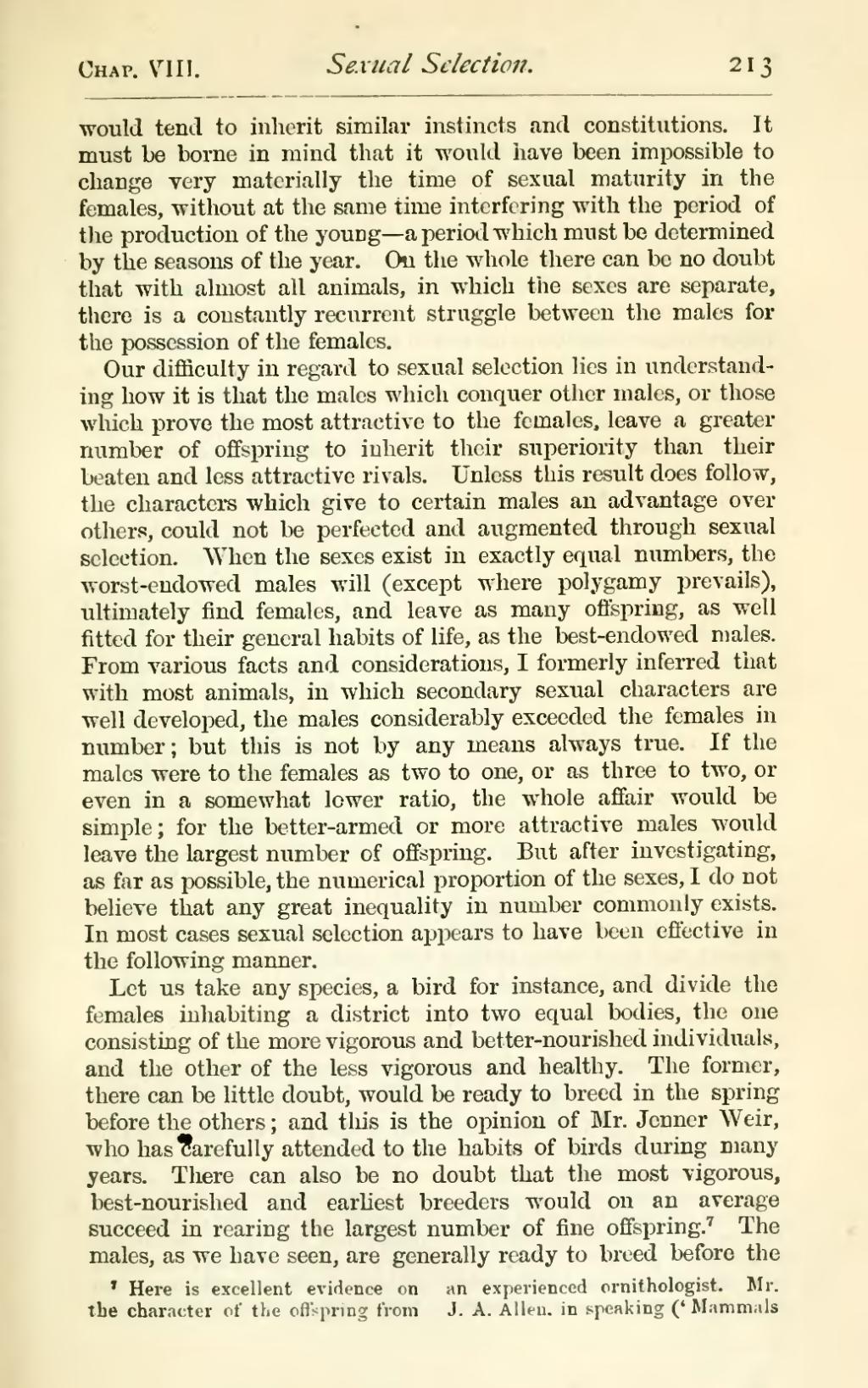would tend to inherit similar instincts and constitutions. It must be borne in mind that it would have been impossible to change very materially the time of sexual maturity in the females, without at the same time interfering with the period of the production of the young—a period which must be determined by the seasons of the year. On the whole there can be no doubt that with almost all animals, in which the sexes are separate, there is a constantly recurrent struggle between the males for the possession of the females.
Our difficulty in regard to sexual selection lies in understanding how it is that the males which conquer other males, or those which prove the most attractive to the females, leave a greater number of offspring to inherit their superiority than their beaten and less attractive rivals. Unless this result does follow, the characters which give to certain males an advantage over others, could not be perfected and augmented through sexual selection. When the sexes exist in exactly equal numbers, the worst-endowed males will (except where polygamy prevails), ultimately find females, and leave as many offspring, as well fitted for their general habits of life, as the best-endowed males. From various facts and considerations, I formerly inferred that with most animals, in which secondary sexual characters are well developed, the males considerably exceeded the females in number; but this is not by any means always true. If the males were to the females as two to one, or as three to two, or even in a somewhat lower ratio, the whole affair would be simple; for the better-armed or more attractive males would leave the largest number of offspring. But after investigating, as far as possible, the numerical proportion of the sexes, I do not believe that any great inequality in number commonly exists. In most cases sexual selection appears to have been effective in the following manner.
Let us take any species, a bird for instance, and divide the females inhabiting a district into two equal bodies, the one consisting of the more vigorous and better-nourished individuals, and the other of the less vigorous and healthy. The former, there can be little doubt, would be ready to breed in the spring before the others; and this is the opinion of Mr. Jenner Weir, who has carefully attended to the habits of birds during many years. There can also be no doubt that the most vigorous, best-nourished and earliest breeders would on an average succeed in rearing the largest number of fine offspring.[1] The males, as we have seen, are generally ready to breed before the
- ↑ Here is excellent evidence on the character of the offspring from an experienced ornithologist. Mr. J. A. Allen, in speaking ('Mammals
